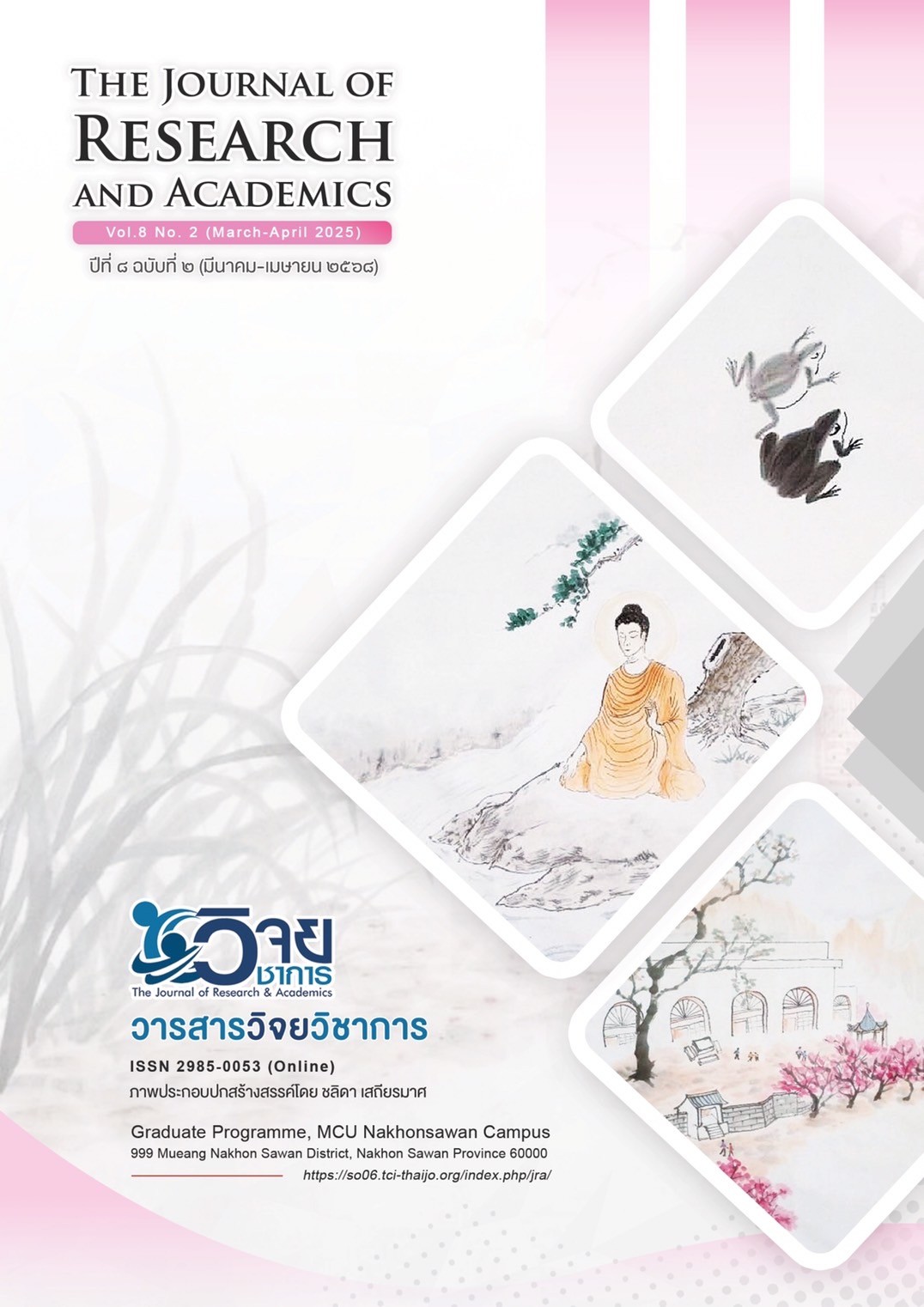Tourist Safety Model for Cultural Tourism in Bangkok
Main Article Content
Abstract
The purposes of this research article were 1) to study the safety of tourists in cultural tourism in Bangkok; and 2) to present a model of tourist safety in cultural tourism in Bangkok. It was a mixed methods research. For quantitative research, opinions were surveyed from sample groups, namely Thai and foreign tourists, as well as the public sector, at 10 cultural tourist attractions in Bangkok. A purposive sampling method was used, with 50 people per location, for a total sample of 500 people. The research instrument was a questionnaire. The statistics used for data analysis were mean, percentage, and standard deviation, using a ready-made social science program. The qualitative research was conducted by doing in-depth interviews using a semi-structured in-depth interview form with 30 key informants, divided into 2 groups, namely tourists and civil society and government officials, and focus group discussions with 20 experts. The research instrument was a focus group discussion form. The research results found that 1) tourist safety conditions in cultural tourism found that tourists had low overall safety concerns. Their opinions on safety management in cultural tourism were at a moderate level. The important factors in safety management were both preventive and problem-solving actions and the integration of cooperation among relevant agencies; 2) the appropriate tourist safety management model covered 6 safety management areas: crime, accidents, public health, natural disasters, getting lost, and plants and animals in tourist attractions. In order to use the research results to their full potential, the government and tourism agencies should emphasize the integration of work together, along with the creation of community networks and volunteers to support area-based management.
Article Details

This work is licensed under a Creative Commons Attribution-NonCommercial-NoDerivatives 4.0 International License.
1. เนื้อหาและข้อมูลในบทความที่ลงพิมพ์กับวารสารวิจยวิชาการ ถือเป็นข้อคิดเห็น และความรับผิดชอบของผู้เขียนบทความโดยตรงซึ่งกองบรรณาธิการวารสารไม่จำเป็นต้องเห็นด้วย หรือร่วมรับผิดชอบใด ๆ
2. บทความ ข้อมูล เนื้อหา รูปภาพ ฯลฯ ที่ได้รับการตีพิมพ์ในวารสารวิจยวิชาการ ถือเป็นลิขสิทธิ์ของวารสารวิจยวิชาการ หากบุคคลหรือหน่วยงานใดต้องการนำทั้งหมดหรือส่วนหนึ่ง ส่วนใดไปเผยแพร่ต่อหรือเพื่อการกระทำการใด ๆ จะต้องได้รับอนุญาตเป็นลายลักษณ์อักษรจากวารสารวิจยวิชาการก่อนเท่านั้น
References
กาญจนา ทองทั่ว และคณะ. (2555). โครงการกระบวนการสร้างวัฒนธรรมความปลอดภัยทางถนนของนักศึกษาและชุมชนรอบมหาวิทยาลัยอุบลราชธานี ระยะที่ 1. กรุงเทพฯ : สำนักงานกองทุนสนับสนุนการสร้างเสริมสุขภาพ (สสส.).
ณัฐฎิญา วรรณสุข. (2561). มาตรการของนโยบายการพัฒนาความปลอดภัยนักท่องเที่ยว. (รายงานการวิจัย). สำนักงานการวิจัยแห่งชาติ (วช.) : มหาวิทยาลัยราชภัฏธนบุรี.
ดารณี อาจหาญ, เกิดศิริ เจริญวิศาล และมนัสสินี บุญมีศรีสง่า. (2565). การยกระดับมาตรฐานปลอดภัยด้านสุขอนามัยการท่องเที่ยวที่พักชุมชนวัฒนธรรมยั่งยืนหลังสถานการณ์แพร่ระบาดของโรคโควิด-19 ในประเทศไทย. วารสารศิลปศาสตร์ มหาวิทยาลัยธรรมศาสตร์, 22(1), 186-204.
ปรัชญา เวสารัชช์. (2528). การมีส่วนร่วมของประชาชนในกิจกรรมเพื่อพัฒนาชนบท. กรุงเทพฯ : สถาบันไทยคดีศึกษา มหาวิทยาลัยธรรมศาสตร์.
พงษ์ดนัย ปรังฤทธิ์. (2561). จิตสำนึกการจัดการความปลอดภัยด้านอาชญากรรมในการท่องเที่ยวโดยชุมชนของบ้านจ่าโบ จังหวัดแม่ฮ่องสอน. วารสารศิลปศาสตร์ มหาวิทยาลัยอุบลราชธานี, 15(2), 224-260.
มหาวิทยาลัยธุรกิจบัณฑิตย์. (2551). อุตสาหกรรมการท่องเที่ยว. (พิมพ์ครั้งที่ 3). กรุงเทพฯ : สำนักพิมพ์มหาวิทยาลัยธุรกิจบัณฑิตย์.
สุขภาพคนไทย 2558. (2558). อุบายขาดสุขภาพ: เมื่อสุขภาพเป็นสินค้า ยาคือเครื่องมือหากำไร. นครปฐม : สถาบันวิจัยประชากรและสังคม มหาวิทยาลัยมหิดล.
สุขสัณห์ เชื้อวงศ์งาม. (2562). แนวทางการมีส่วนร่วมของผู้ประกอบการต่อการรักษาความปลอดภัยในสถานที่ท่องเที่ยวย่านถนนข้าวสาร กรุงเทพมหานคร. วารสาร มจร พุทธปัญญาปริทรรศน์, 5(3), 1-14.
World Economic Forum. (2019). The Travel & Tourism Competitiveness Report 2019. Geneva : World Ecomomic Forum.
World Tourism Organization. (1996). Tourist Safety and Security: Practical Measures for Destinations. Madrid : World Tourism Organization.

